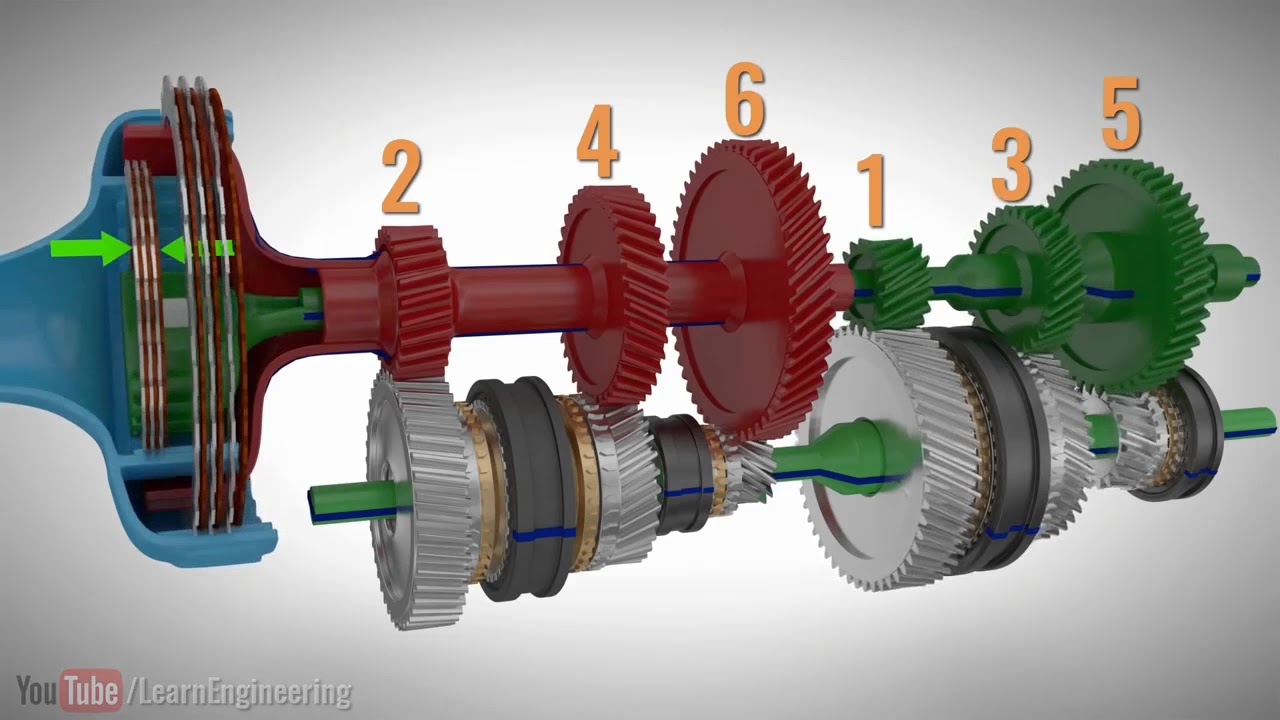
How to drive with a dual clutch gearbox? Practical guide
Content
Although dual clutch transmissions have been around for almost twenty years, they are still a relatively new and modern type of automatic transmission. Its design assumptions bring many tangible benefits, but are also burdened with certain risks. Therefore, correct operation is especially important when driving a vehicle with a dual clutch transmission. Here's how to take care of it.
Dual clutch transmissions are widely recognized for their high performance, which gives them a number of advantages over other types of transmissions. Compared to classic automatics, driving with them in most cases contributes to lower fuel consumption while increasing driving dynamics. Comfort itself is also important, resulting from an almost imperceptible gear change.
Where it comes from and How does a dual clutch transmission work?, I wrote in more detail in the material on the operation of the DSG gearbox. I pointed out there that the choice of this chest involves no small risk of expense. At best, they mean regular oil changes, at worst, a major reconstruction of the gearbox, even if every 100-150 thousand. kilometers.
Such a shortened service life of this component is largely due, unfortunately, to non-compliance for now driving a car with a dual clutch transmission. You don't need to completely change your habits, just introduce some good habits.
Dual clutch transmissions: different names for different brands
Before we get to them, it's worth clarifying which cars have dual clutch transmissions. Below I have prepared a list of commercial names for transmissions of this type in individual car brands, along with sub-suppliers of this solution:
- Volkswagen, Skoda, Seat: DSG (manufactured by BorgWarner)
- Audi: S tronic (Produced by BorgWarner)
- BMW M: M DCT (produced by Getrag)
- Mercedes: 7G-DCT (own production)
- Porsche: PDK (produced by ZF)
- Kia, Hyundai: DCT (own production)
- Fiat, Alfa Romeo: TCT (manufactured by Magneti Marelli)
- Renault, Dacia: EDC (produced by Getrag)
- Ford: PowerShift (manufactured by Getrag)
- Volvo (older models): 6DCT250 (made by Getrag)
How to drive with a dual clutch transmission
The most important thing is to listen to the dual clutch gearbox. If an overheating message appears, stop and let it cool down. If you enter safe mode and get a message about the need to contact the service, it really is worth doing. These simple steps can potentially help us save thousands of PLN on unplanned expenses.
Apart from the situation where there is a malfunction, the main faults leading to the failure of the dual clutch transmission will be the consequence of the habits acquired while driving with a manual transmission. The most common sin committed by novice drivers with all automatic transmissions, regardless of construction type, is simultaneously pressing the gas and brake pedals.
Another bad habit is to use the N drive mode as a neutral gear in a manual transmission. The N position on an automatic transmission, such as a dual clutch transmission, is only used in an emergency. Such scenarios include pushing or towing the vehicle, although the drive wheels must also be raised when towing at higher speeds and longer distances. If we accidentally switch to N while driving, the engine will "roar" and we will probably want to quickly correct our mistake and return to D. It is much better for the gearbox to wait until the rpm drops to a minimum. level, and then turn on the transmission.
We do not shift the gearbox to N also when stopping at traffic lights or when approaching them. Older riders might be tempted to drop backlash when going downhill, which definitely shouldn't be done with a dual-clutch gearbox. Since we are already on the hills, special attention should be paid to climbing the hills. This must be done with the DCT gearbox. Preventing the car from rolling back downhill by maintaining low RPMs with little throttle is the easiest way to damage the box with two clutches. The same applies to very slow driving with the brake pedal slightly released. In such situations, the clutches quickly overheat.
Discipline must also be observed in other modes of operation of the gearbox. The vehicle is parked in P mode. The engine can only be turned off after switching to this mode. Otherwise, oil pressure will drop inside the box and the working units will not be properly lubricated. Newer types of DCTs with an electronic drive mode switch no longer allow this dangerous error.
Luckily, in these types of transmissions, you can't engage R in reverse while the car is rolling forward. As with manual transmissions, Reverse gear can only be engaged after the vehicle has come to a complete stop..
Dual Clutch Transmission: What to Pay Attention to When Operating
The basic rule for using any automatic transmission, especially with two clutches, is as follows. regular oil change. In the case of PrEP, it should be every 60 thousand. kilometers - even if the factory specifications suggested otherwise. Over the years, some automakers (mainly the Volkswagen Group, which was a pioneer in the category of these transmissions) have reconsidered their previous views on oil change intervals.
Therefore, in terms of distance traveled and the selection of a suitable oil, it is best to trust specialists who have up-to-date knowledge of this type of transmission. Luckily, they've been on the market long enough to become popular enough to make them. maintenance is not difficult.
Finally, one more note for tuning lovers. If you are buying a DCT vehicle with the intention of modifying it, right now pay attention to the maximum torque that the gearbox can handle. For each model, this value is precisely defined and embedded in the name itself, for example, DQ200 or 6DCT250. Manufacturers have always left some margin in this area, but in the case of some versions of the engine, it does not have to be very large.
